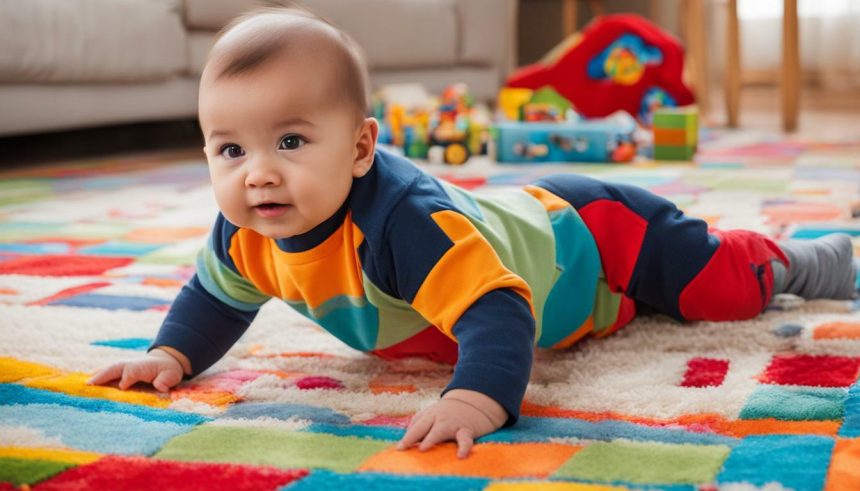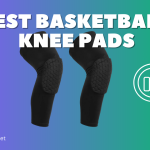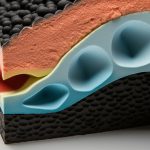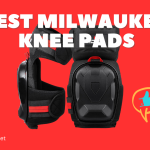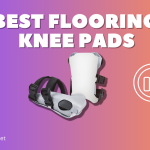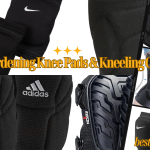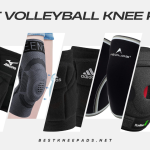As a new parent, you want to keep your little one safe at all times, even when they are crawling. One question that often arises is whether babies should wear knee pads when learning to crawl. While knee pads can provide protection and support, it is important to consider the potential drawbacks and alternative options.
Key Takeaways:
- Protecting babies’ knees during crawling is crucial for their safety and comfort.
- Knee pads can offer protection and support, but they also have potential drawbacks.
- Alternative options, such as soft play mats or carpeted surfaces, can be just as effective.
- Consulting with pediatric professionals can provide personalized guidance on the topic.
- Prioritizing a safe crawling environment and ensuring your baby’s well-being is key.
The Benefits of Knee Pads for Crawling Babies
As your baby begins to crawl, it’s important to consider ways to protect their delicate knees from potential scrapes and bruises. Knee pads can be a useful tool in ensuring your baby’s safety during this exciting milestone.
One of the significant benefits of knee pads is the added protection they provide against hard surfaces. As your baby crawls around on hardwood or tile floors, knee pads can prevent painful scrapes and bruises that may interfere with their crawling progress. Knee pads can also provide a buffer between your baby’s delicate skin and rough carpet fibers, preventing rug burns and other irritations.
In addition to protection, knee pads can offer increased stability and support for your baby as they learn to balance themselves on their hands and knees. The added cushioning of knee pads can help absorb impact and prevent wobbling or slipping, providing a more stable base for your baby to crawl on. This stability can also aid in the development of balance and coordination, as your baby practices crawling forward, backward, and sideways.
Potential Drawbacks of Using Knee Pads
While knee pads can offer protection and support for crawling babies, there are some potential drawbacks to consider.
Restriction of Movement: Some parents worry that knee pads may restrict their baby’s movement and hinder their crawling development. It is important to choose knee pads that fit properly, allowing your baby to move comfortably and freely.
“Ill-fitting knee pads can be uncomfortable for your baby and can actually cause more harm than good.”
Discomfort: Like any new item of clothing, knee pads may cause some initial discomfort as your baby adjusts to wearing them. It is essential to monitor your baby’s behavior and remove the knee pads if they seem to be causing discomfort or irritation.
Impact on Development: Some experts argue that using knee pads may hinder the natural development of strength and resilience in the knees. However, this concern has not been extensively studied, and many parents find the benefits of knee pads to outweigh the potential drawbacks.
Ultimately, the decision to use knee pads for your crawling baby is a personal one, and it is important to weigh the potential benefits and drawbacks before making a choice.
Alternatives to Knee Pads for Crawling Babies
While knee pads can be a helpful tool in protecting your baby’s knees during crawling, they are not the only option available. Here are some alternative options for protecting your baby’s knees:
Soft Play Mats: Consider using a soft play mat to create a safe crawling area for your baby. These mats are designed to be gentle on your baby’s knees and provide enough padding to protect them from hard surfaces.
Carpeted Surfaces: If you have carpeted floors in your home, you may not need to use knee pads at all. Carpet provides a soft surface for your baby to crawl on, reducing the risk of injury.
Leggings with Built-in Knee Padding: Some baby clothing brands offer leggings with built-in knee padding, providing an extra layer of protection for your baby’s knees. These are a great option for parents who prefer not to use traditional knee pads.
Remember, the most important thing is to create a safe environment for your baby to crawl in. Consider your options and choose what works best for you and your little one.
Tips for Ensuring Crawling Babies’ Safety
Whether or not you decide to use knee pads when your baby is crawling, it is crucial to prioritize their safety. Here are some practical tips to help keep your crawling baby safe:
Keep a close eye on your baby as they crawl around the house. It is easy for them to get into hazardous situations quickly, so be vigilant at all times.
Make sure your home is babyproofed by covering electrical outlets, securing cabinets and drawers, and blocking off stairways or other dangerous areas.
Provide a safe crawling environment. Opt for surfaces that are soft and cushioned, such as play mats or carpeted areas. Remove any sharp or dangerous objects from the crawling area.
Encourage your baby’s natural development by allowing them to crawl and explore on their own. Avoid overprotecting them, as they need to develop strength and resilience in their knees and other areas of the body.
Watch for signs of discomfort or distress, such as rubbing at the knees, fussiness, or crawling with an altered gait. If you notice any issues, take a break and give your baby a chance to rest and recover.
Consult with pediatric professionals if you have any concerns about your baby’s crawling development or the use of knee pads. They can offer personalized guidance based on your baby’s unique needs and help ensure their safety and well-being.
Consulting with Pediatric Professionals
When making any decision regarding your baby’s health and safety, it is essential to seek guidance from pediatric professionals. Consulting with healthcare providers or pediatricians can provide personalized advice based on your baby’s unique needs.
When considering the use of knee pads for crawling babies, it is especially important to speak with a pediatric professional. They can help you understand the potential benefits and drawbacks of using knee pads and provide guidance on choosing the best option for your baby.
During your consultation, you can discuss any concerns or questions you have about the use of knee pads, alternative options, and how to ensure a safe crawling environment. Your pediatric professional can also offer tips on monitoring your baby for any signs of discomfort or distress while crawling.
Remember, your baby’s safety is paramount, and seeking advice from pediatric professionals can help you make informed decisions that prioritize their well-being.
Conclusion:
Ultimately, the decision of whether to use knee pads for your crawling baby comes down to personal preference and consideration of the potential benefits and drawbacks. While knee pads can provide protection and support for delicate knees, they may also restrict movement and potentially impact the development of natural strength and resilience in the knees.
However, whether you choose to use knee pads or not, prioritizing a safe crawling environment and regularly monitoring your baby for any signs of discomfort or distress is crucial for their overall safety and well-being. Consider alternative options such as soft play mats, carpeted surfaces, or leggings with built-in knee padding as alternatives to traditional knee pads.
Always consult with pediatric professionals, such as healthcare providers or pediatricians, who can provide personalized guidance based on your baby’s unique needs. By taking these steps, you can balance safety and comfort for your crawling baby and support their healthy development.
